TEN DAYS OF BUTTERFLY KALEIDOSCOPE
- write
- 2019-07-06
Lookup 453
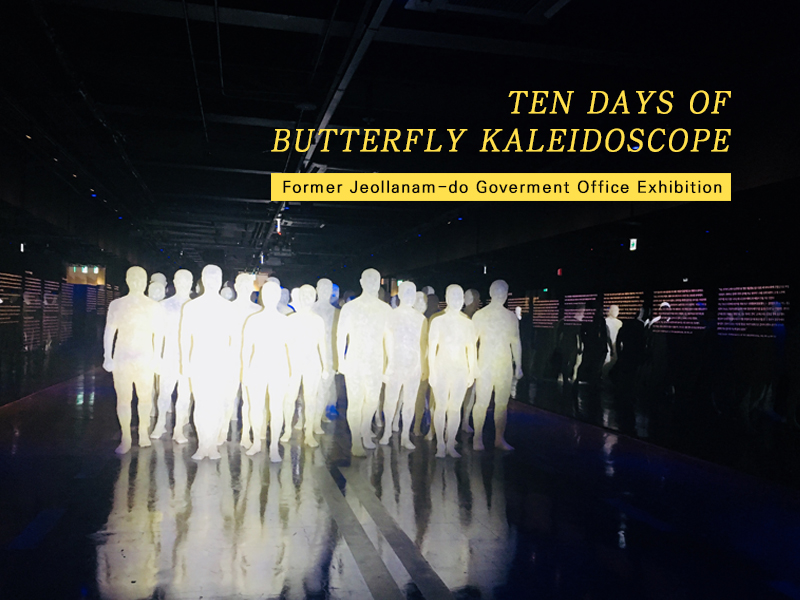
TEN DAYS OF BUTTERFLY KALEIDOSCOPE,
Special Exhibition at
Asia Culture Center opens this exclusive exhibition in commemoration of the 39th anniversary of the Gwangju Democratic Movement on May 18, also known internationally as Gwangju Uprising (광주 항쟁), May 18 Gwangju Democratization Movement (5.18 광주 민주화 운동), and May 18 Democratic Uprising, by UNESCO. This was due to the fact that from the 18th and during the following 10 days of May in 1980 the city was besieged and attacked by the army and paramilitary troops, in order to repress the pro-democracy popular movements of that time.
This artistic representation of the ten-day struggle is divided into 4 fundamental stages: introduction, development, turn of events and conclusion, for a better understanding of each of the events that occurred.
On the first floor there are three important sections: "Welcome to Gwangju", represents the historic pressure that Gwangju citizens overcame to make way for a joining stage. That is why this section shows a great structure that crosses the three floors of the exhibition with pictures of several people from different nationalities smiling sympathetically with the spirit of May and the future peace of humanity.
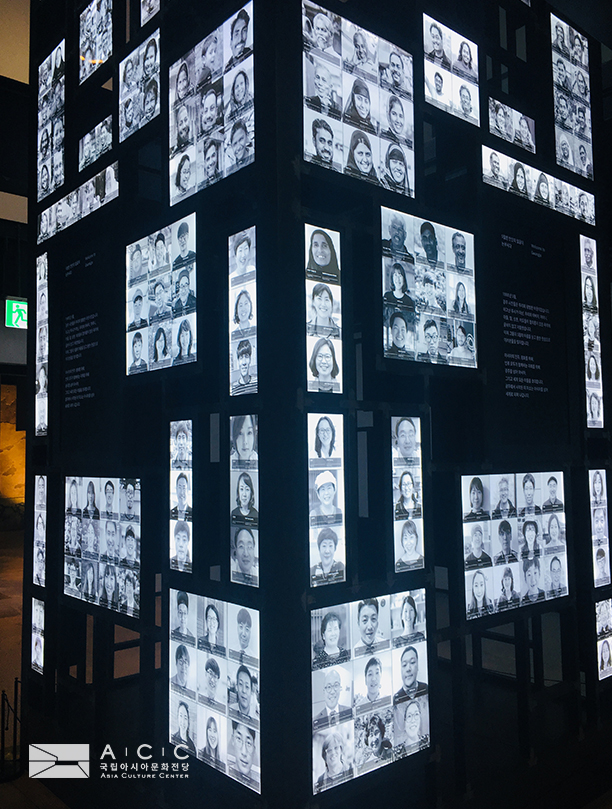
¨Sealed Time 1979-1980¨, this section reopens
sealed thoughts of the May 18 Democratic
Uprising through illusion thoughts that the visitor can experience.
The visitor has to appreciate the image of a human
being on the wall on the right side, who
responding to the visitor´s movements and creating waves of light, then these
waves are broken and dispersed, this is in order to provide the feeling that
the visitor is strolling through clouds so that the visitor finally opens his
thoughts and begins the spatial journey through the historical fragments of the uprising that are located on the monitors that the floor contains.

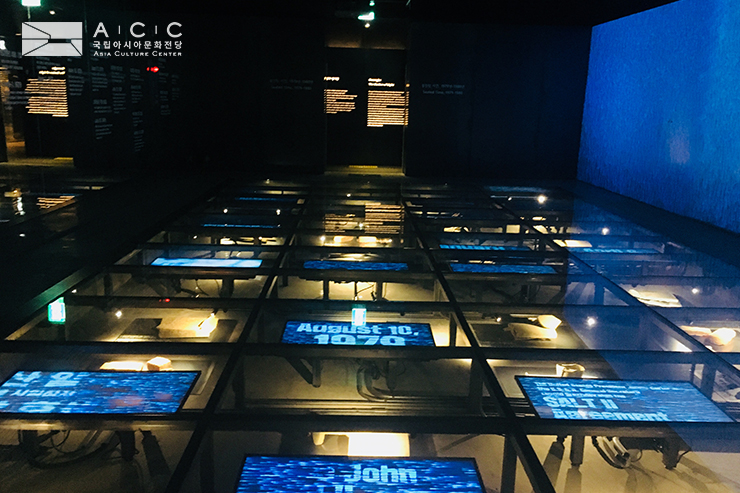
Gwangju "The station of Light" represents the
space where Gwangju citizens gathered on May 16, 1980, two days before the main the event occurred on May 18 around the fountain of the Provincial Office to claim
democracy. The bronze figures in this section represent the citizens who are
also located in different places in the exhibition.
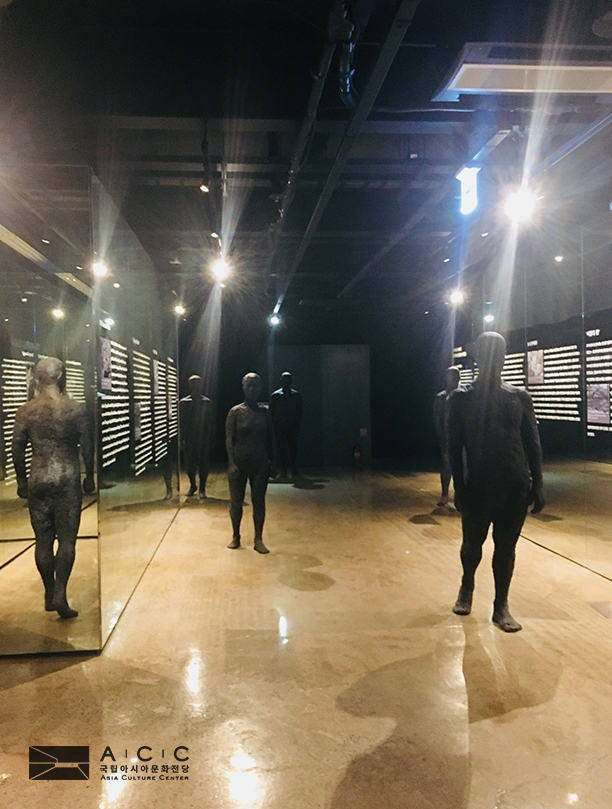
On the second floor there are three other sections
that continue with the representation of the events that occurred. In the
section "Timeline Gwangju, May 18-27" there are monitors installed on
the wall on both sides that contain stories related to the violence that
occurred in Gwangju during those ten days. The stories were made based on the
testimonies by the same citizens who personally experienced the uprising, each
of these stories are shown with just entering the scene touching the title of
the story in each of the monitors.
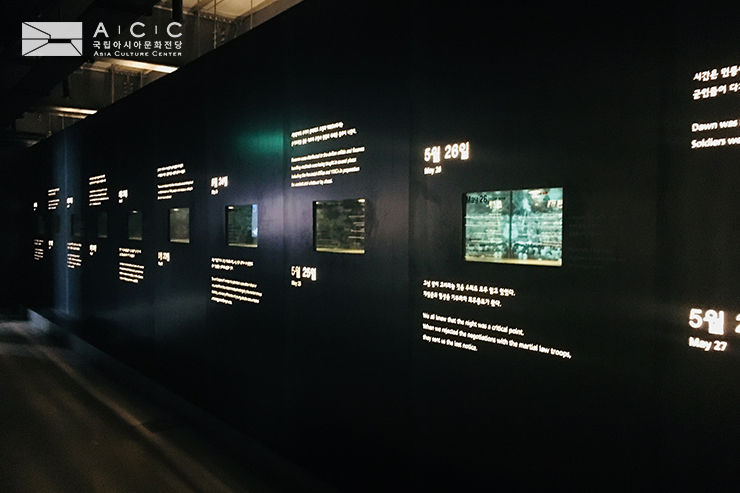
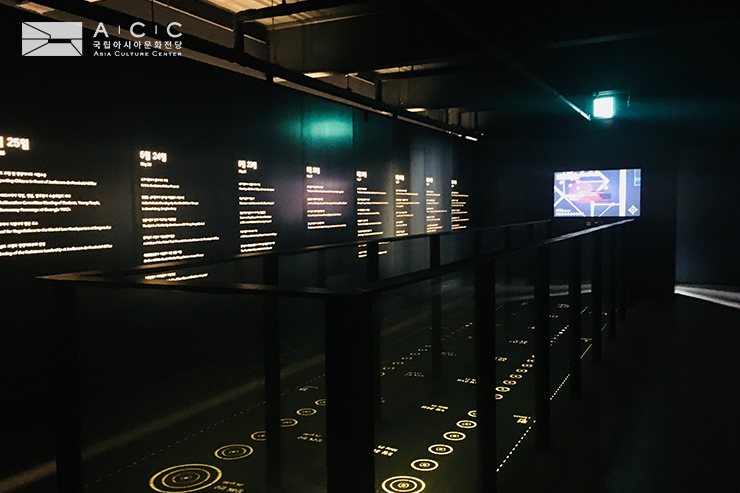
While in the section "Heroes of Evening on Tuesday, May, 20" shows the vehicle scene in Geumnamro, an area where the drivers who witnessed as the war brigade drove more than 200 buses and trucks with headlights on and sounding the voicings as a sign of support until Provincial Office of the city. In this space, the visitor can simulate passing through the gap between the tumult provoked by the military and police, and how from the buses that are on both sides of this section come the sounds of the horns and shouts of the people who responded to the movement.
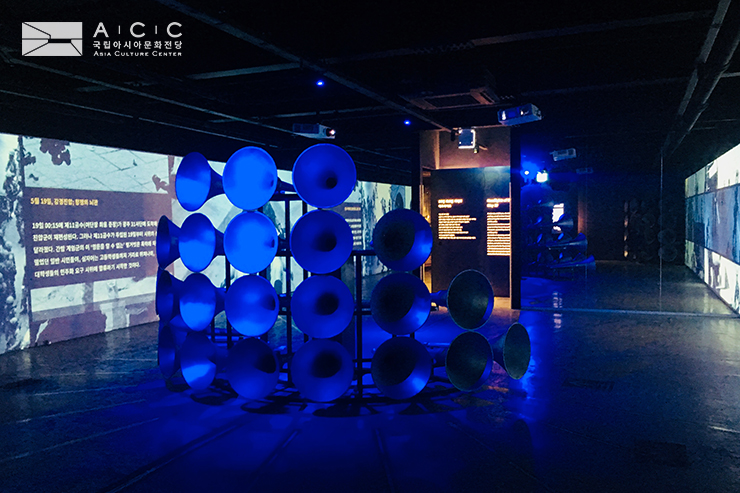
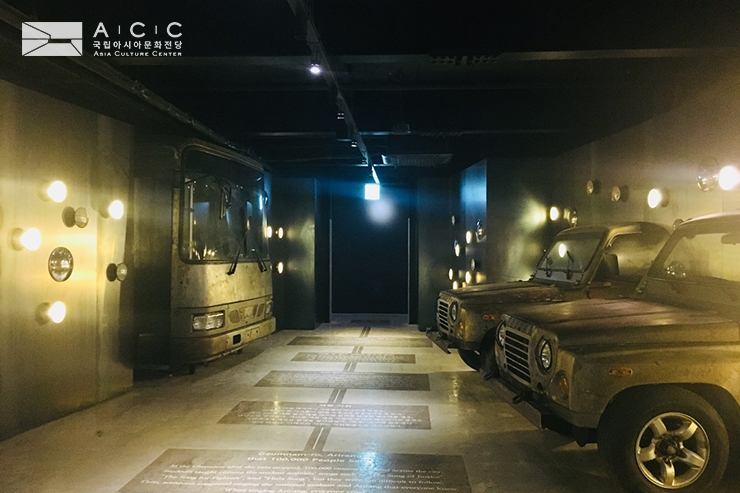
In this
space the figures represent the departure of the citizens towards the
Provincial Office and the intense rays of light represent the bullets fired
against the citizens.
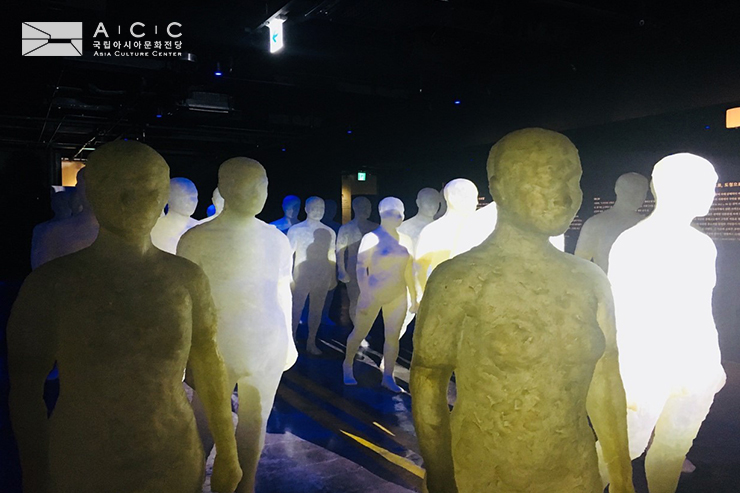
Written by: Estefany Mandarachi Rosales, 12th ACC Reporter
Designed by: Ah Jin Kim, 12th ACC Reporter

